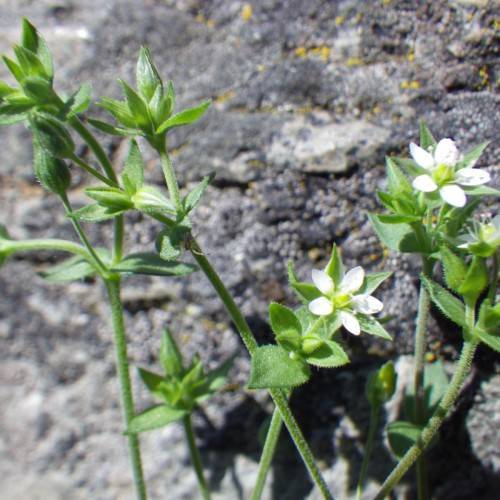
Thyme-Leaved Sandwort
Arenaria serpyllifolia var. serpyllifolia
Watering:
Minimal
Hardiness Zone:
Flowers:
Flowers
Sun:
full sun,part shade
Fruits:
Fruits Ready In
Leaf:
Yes
Growth Rate:
Low
Drought Tolerant:
Yes
Salt Tolerant:
Yes
Care Level:
Medium
watering
Red Bearberry (Arctous rubra) should be watered moderately and regularly, but not too frequently. Water this plant about once a week - if the weather is very hot or very dry, increase the frequency of watering to twice a week. Make sure to always check the soil moisture before watering – if the soil is still moist, delay the next watering. During winter months, reduce the frequency of watering to once a month.
sunlight
Red Bearberry (Arctous rubra) grows best in areas with full sun and partial shade. It should receive at least 4-6 hours of sunlight per day, with the optimum amount being 8 or more hours. This species of plant doesn't do well in full shade, so it's important to make sure it has plenty of access to direct sunlight. If planted in a shady area, it can become leggy as a result of inadequate sunlight. It's best to locate the Red Bearberry in a sunny spot when possible.
pruning
Red Bearberry (Arctous rubra) should be lightly pruned in late winter or early spring before new growth begins. This promotes a healthy and abundant bloom, a full plant to create a hedge, or a more compact form. Just prior to pruning, be sure to check the size of the stem, since stems that are narrow should not be pruned heavily. Cut out any dead or damaged branches and thin out any overcrowded areas. This will help to let in light, increase airflow, and reduce pest problems. Pinch or cut back leggy growth to encourage a compact habit and stronger growth. Avoid "shearing," or cutting all branches to the same length as this will produce a less attractive, unnatural-looking plant.
